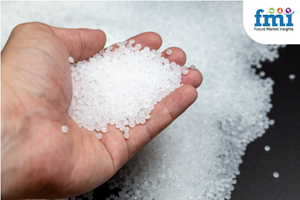2013: Another Strong Year for Automotive
Wood on Plastics
It will be the fourth consecutive year of solid growth, bringing total assemblies to just half a million units shy of their pre-recession level of about 12 million units per year
Our latest forecast calls for total motor vehicle assemblies in the U.S. to reach 11.5 million units in 2013, representing an 11% rise over 2012. Last year’s 10.3 million units represented a jump of nearly 20% from 2011. I expect 2013 to be the fourth consecutive year of solid growth in automotive. And if our forecast is correct, total assemblies will be just half a million units shy of their pre-recession level of about 12 million units per year.
This forecast is based on a combination of factors, both positive and negative. On the positive side, the average age of motor vehicles in the U.S. is still quite high by historical standards. So there is still pent-up demand from consumers and small businesses that are awaiting better economic conditions.
We expect the overall economy to grow by 2.5% this year and 3.5% next year. This trend of gradual improvement will be sufficient to foster steady growth in motor vehicle demand for the foreseeable future. Consumers’ rising awareness of the issues pertaining to energy independence and carbon emissions will continue to spur demand for lighter, more fuel-efficient vehicles, and also ones that use non-traditional power sources such as natural gas, biodiesel, and electricity.
I also expect rising demand for small trucks and utility vehicles from contractors and other construction workers, generated by the accelerating recovery in residential construction. Until last year, the construction sector was a drag on overall economic activity. But this trend was clearly reversed in the second half of 2012.
There will also be a surge in demand in the Northeast, as vehicles that were destroyed by Hurricane Sandy are replaced. Natural disasters restrict demand in the short term, but they increase economic activity in later months as the flow of insurance benefits and emergency payments from government begins to reach claimants.
These factors will keep intact the current automotive expansion, but some negative forces will keep demand from growing even faster this year. The most obvious is the agonizingly slow growth in both new job creation and personal incomes. The lackluster labor market has resulted in a decline in the overall labor force. People who do not have jobs typically do not buy new cars. It will take at least another year or two before we get more robust improvement in the employment data.
Another short-term negative factor is the recent dip in consumer confidence due to the “fiscal cliff” debacle and the rise in Social Security payroll taxes. It will take a few months for most middle-class households to adjust to lighter paychecks. Some of this direct hit to consumer pocketbooks might eventually be mitigated by lower energy prices or rising home values. But for at least the first half of this year it will curtail spending on big-ticket durable goods.
There is another one-time factor that will affect the automotive market positively in the first quarter of 2013, but it may only pull sales forward from later months. Due to the uncertainty that was created by the fiscal cliff issues, many companies accelerated their schedule for paying dividends and bonuses in order to avoid higher taxes in 2013. Both of these income categories spiked upward in December of last year, and this was followed by a surge in auto sales in January. It is still too early to tell just how big an effect this will have on the overall trend in motor vehicle assemblies, but plastics processors who supply the auto sector should be wary of reading too much into the data from the first couple of months of this year.
WHAT THIS MEANS TO YOU
•The trend for plastics and composites increasingly replacing metal in motor vehicles will continue for the foreseeable future.
•The sluggish U.S. economy is presently the most important factor affecting demand. The economy will eventually recover, and then issues pertaining to sustainability, the environment, and energy independence will become the predominant factors.
•Energy independence in the U.S. will only be achieved by a combination of lower overall energy consumption and higher consumption of fuel products that are not derived from crude oil
Related Content
Honda Now Exploring UBQ’s Biobased Material Made from Unsorted Household Waste
UBQ is aiming to expand its reach for more sustainable automotive parts as well as non-automotive applications.
Read MoreAdditive Fusion Technology Optimizes Composite Structures for Demanding Applications
9T Labs continues to enhance the efficiency of its technology, which produces composite parts with intentionally oriented fibers.
Read MorePlastic Compounding Market to Outpace Metal & Alloy Market Growth
Study shows the plastic compounding process is being used to boost electrical properties and UV resistance while custom compounding is increasingly being used to achieve high-performance in plastic-based goods.
Read MoreInjection Molded Tape and Resin “Sandwich” Technology Debuts
During its Mobility Days in Austria, Engel and KTM Technologies debuted an all-plastic molded motorcycle seat base produced via a tape-sandwich process that can run in a standard molding process.
Read MoreRead Next
Beyond Prototypes: 8 Ways the Plastics Industry Is Using 3D Printing
Plastics processors are finding applications for 3D printing around the plant and across the supply chain. Here are 8 examples to look for at NPE2024.
Read MoreMaking the Circular Economy a Reality
Driven by brand owner demands and new worldwide legislation, the entire supply chain is working toward the shift to circularity, with some evidence the circular economy has already begun.
Read More









